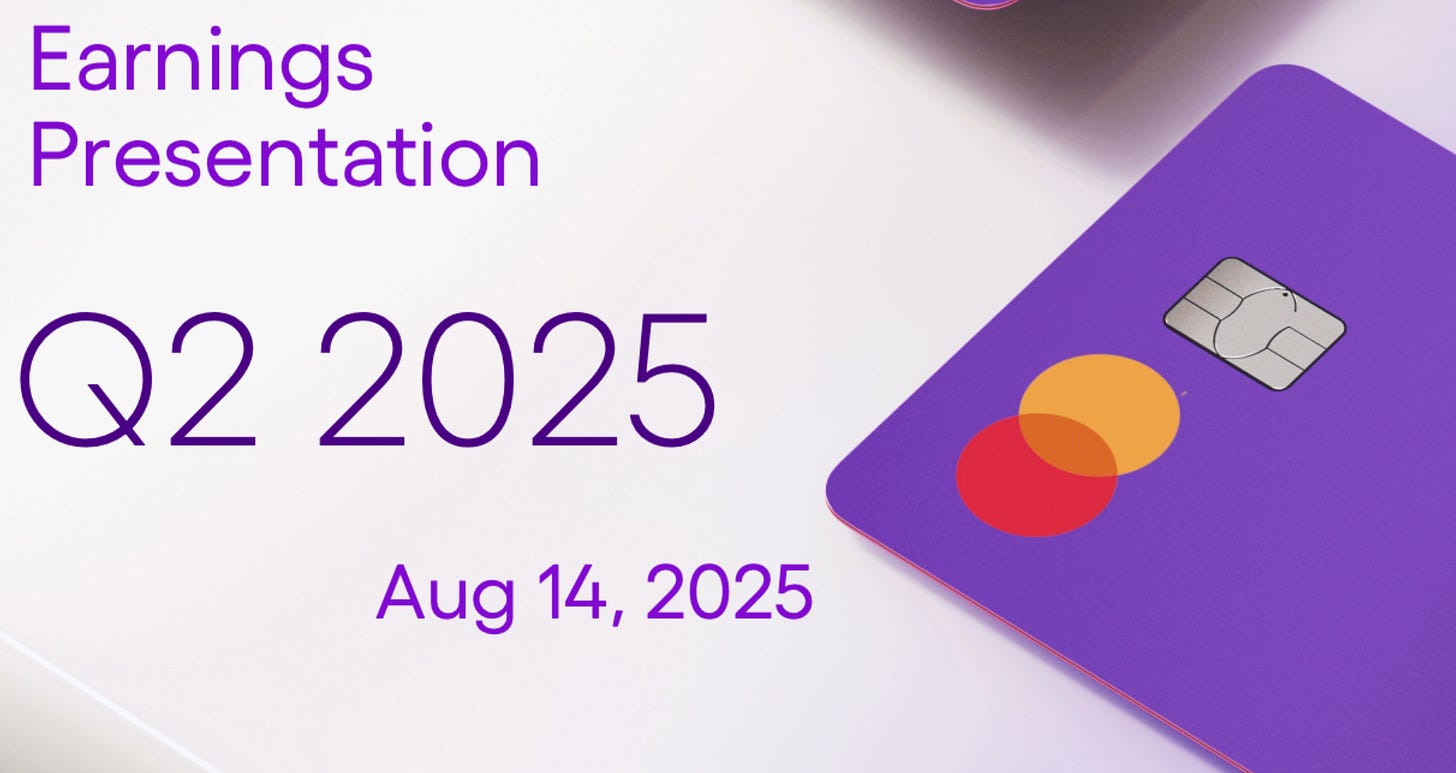Nu Q2 2025 Earnings Update!
Strong Customer Gains, Exploding Deposits, and Affordable Valuation!
Nu is a disrupting company operating in a large, dynamic, and volatile region. While this makes them an extremely exciting investment, it also makes Nu difficult for Wall Street to understand.
Last quarter, Wall Street panicked, sending the stock down 8% after earnings.
Why, you ask?
Because of a 1.8% decrease in monthly ARPU, a 35.6% increase in interest cost, and a 17.2% increase in loan loss provision.
As I said in my analysis, these were shortsighted concerns, and this quarter, Nu proved me right, delivering a stellar earnings report!
Stock is up 10% as ARPU grew 8.9% Y/Y, and net deposits exploded 456% Y/Y!
Nu continues to deliver strong results despite tough macroeconomic conditions in Latin America, especially in Brazil, where persistent inflation is dampening consumer spending, and Trump’s Trade War threatens to damage the country's export-dependent economy.
In this article, I will review Nu’s Q2 2025 financial results. If you are interested, I wrote a full Deep Dive about Nu, which covers all of the most important aspects an investor needs to know about the company.
Let’s dig in!
1. Customer Level Results
2. Brazil
3. Mexico
4. Colombia
5. Deposits and Loan Portfolio
6. Revenue
7. Profitability
8. Valuation
9. Conclusion
1. Customer Level Results
Nu continues to gain customers faster than anyone could have imagined just a few years ago.



